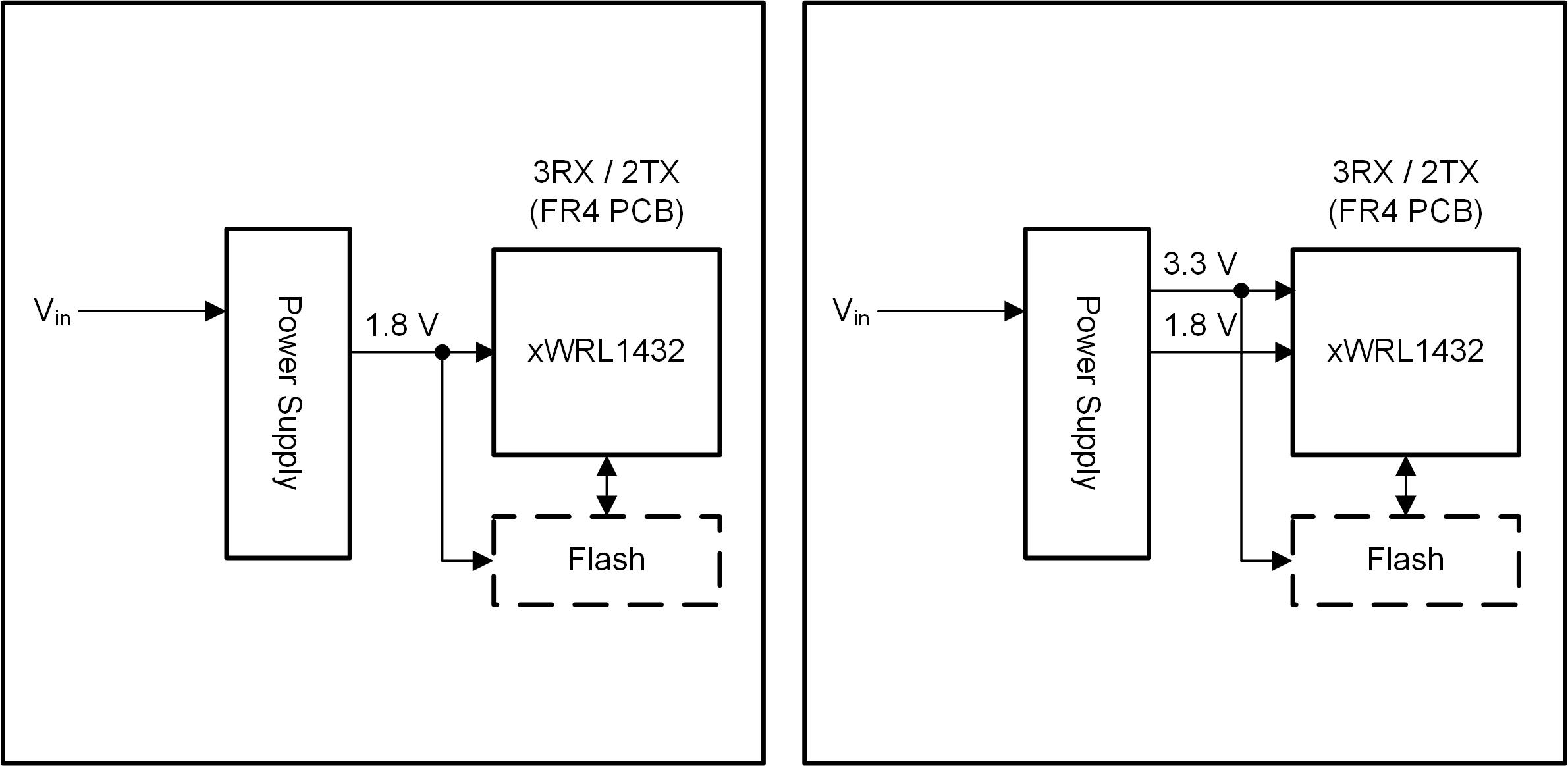JAJSQU8 July 2023 IWRL1432
ADVANCE INFORMATION
- 1
- 1 特長
- 2 アプリケーション
- 3 概要
- 4 機能ブロック図
- 5 Revision History
- 6 Device Comparison
- 7 Terminal Configurations and Functions
-
8 Specifications
- 8.1 Absolute Maximum Ratings
- 8.2 ESD Ratings
- 8.3 Power-On Hours (POH)
- 8.4 Recommended Operating Conditions
- 8.5 Power Supply Specifications
- 8.6 Power Save Modes
- 8.7 Peak Current Requirement per Voltage Rail
- 8.8 RF Specification
- 8.9 Supported DFE Features
- 8.10 CPU Specifications
- 8.11 Thermal Resistance Characteristics
- 8.12
Timing and Switching Characteristics
- 8.12.1 Power Supply Sequencing and Reset Timing
- 8.12.2 Synchronized Frame Triggering
- 8.12.3 Input Clocks and Oscillators
- 8.12.4 MultiChannel buffered / Standard Serial Peripheral Interface (McSPI)
- 8.12.5 RDIF Interface Configuration
- 8.12.6 General-Purpose Input/Output
- 8.12.7 Controller Area Network - Flexible Data-rate (CAN-FD)
- 8.12.8 Serial Communication Interface (SCI)
- 8.12.9 Inter-Integrated Circuit Interface (I2C)
- 8.12.10 Quad Serial Peripheral Interface (QSPI)
- 8.12.11 JTAG Interface
- 9 Detailed Description
- 10Applications, Implementation, and Layout
- 11Device and Documentation Support
- 12Mechanical, Packaging, and Orderable Information
8.5.5.1.1 BOM Optimized Mode
In this mode the device can be powered using one 1.8V regulator OR using a 3.3V and a 1.8V regulator mode. The choice of one rail vs two rails is dependent on the IO voltages needed.
 Figure 8-2 BOM Optimized Mode Power Management (Left:
1.8V I/O Topology, Right: 3.3V I/O
Topology)
Figure 8-2 BOM Optimized Mode Power Management (Left:
1.8V I/O Topology, Right: 3.3V I/O
Topology)